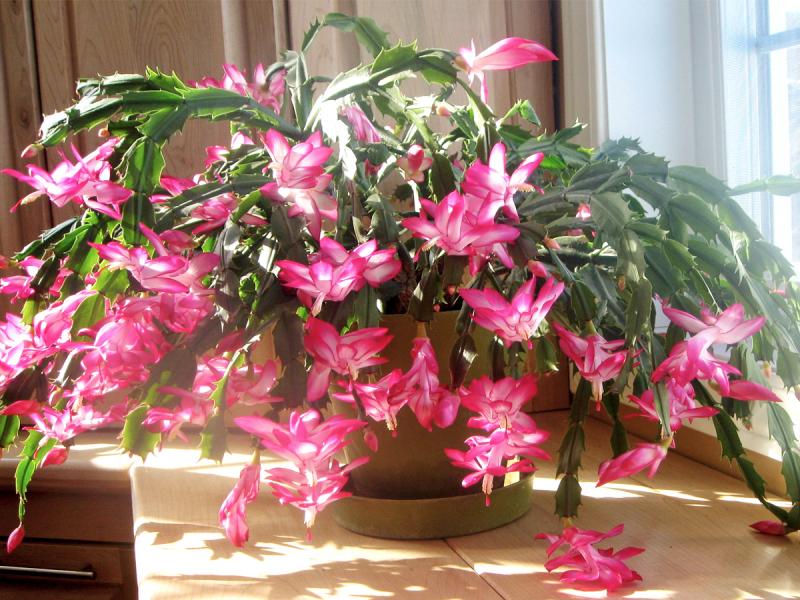It is autumn, and darkness befalls the northern hemisphere. Our fear of things that go bump in the night is not our imagination but our evolution. Night's darkness signals a time for sleep, and asleep we are at our most vulnerable, and totally exposed to attack.
Heck, in one study a full 10 percent of people admitted fearing the dark so much that they wouldn’t even leave the security of bed to use the bathroom in the middle of the night.
This brings us to Christmas, which is only slightly lighter than the shortest day on earth, Dec. 22. So let’s discuss the Christmas cactus (Schlumbergera) and how this houseplant needs darkness, not light, to bloom.
It is also a matter of how and when to water these plants, giving them the right light, and keeping them safely out of drafts and above freezing.
Christmas cactus has a bloom cycle of dormancy, water, light and temperature. Cut back on how much you water your Christmas cactus during late fall, from October to the middle of November.
Let the top two or three inches of soil dry out between waterings. This helps Christmas cactus go into dormancy, and the cactus needs the rest period of dormancy in order to bloom.
Christmas cactus now needs to be in darkness for 12-14 hours each day. This dark period mimics winter, when flower buds develop. Many gardeners simply put the Christmas cactus in a closet at 6 p.m., then take it out at 6 a.m. and move it to a sunlit window until 6 p.m., and repeat the process for six to eight weeks. Smaller Christmas cacti can be covered with a box to block the light.
During this dark period of six to eight weeks, the Christmas cactus also benefits from cooler temperatures, 50-55 degrees F. (10-13 C). Avoid drafts or heating vents.
After the cool, dark weeks are over, you can move your Christmas cactus to a spot where it gets lots of sun, but not hot, direct sunlight. Too much sun can scorch the leaves. Christmas cactus has flattened, fleshy leaves edged with rounded teeth.
If your plant gets too chilled, the buds will drop off unopened before they have a chance to bloom. A bright spot with indirect sunlight brings out the most flowers. To keep the blooms fresh, lightly mist the plant when it is blooming. Mist in the morning so it dries off by nighttime.
Do not be in a rush to transplant your Christmas cactus, because they actually bloom better when they are pot-bound. Never transplant more often than once every four years. If you do repot them, move up just one pot size. Use a well-draining cactus soil, or add sand or perlite to regular potting soil for better drainage.
For some, Christmas should be all year long, and a well-kept Christmas cactus may surprise you with blooms at seemingly random times throughout the year. Christmas cactus is not toxic to dogs and cats.
Christmas is for giving, and luckily your Christmas cactus can easily supply you with three-segment-long stems suitable for rooting. Let the cutting sit overnight to form a callus over the cut, then simply insert it cut end down into a cactus potting mix. Water occasionally and the leaves will root in about four weeks. Since the cuttings are clones, the new Christmas cactus will be identical to the parent plant.
A well-cared-for Christmas cactus can live for years or even decades. There are accounts of families passing down the same Christmas cactus as living heirlooms for over 100 years.
If you haven't done so yet, put your Christmas cactus to rest for six to eight weeks. In the night. In the dark. Alone. In the dark. Yes, dark.
It's enough to make a gardener wet the bed. Or at least 10 percent of us, anyway.






















































